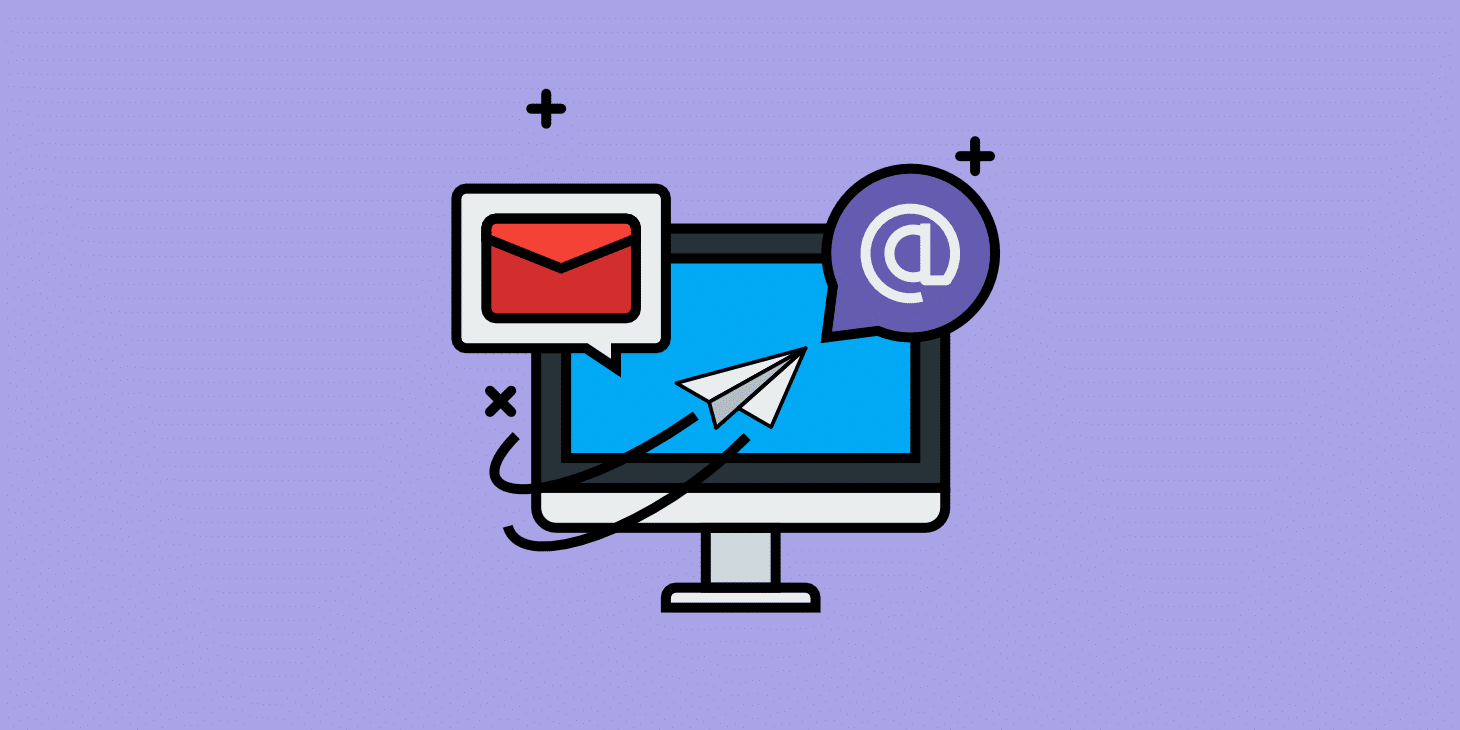After spending a great deal of time building a rock-solid email list and crafting the perfect newsletters to send to your subscribers, you trust that your emails disappear into the web and land in inboxes each time you hit “Send.”
What you might not know is that behind the scenes, there’s someone working hard to make sure your subscribers actually receive your emails. That someone is an Email Deliverability Manager.
At its simplest, an Email Deliverability Manager is a person who ensures your emails get delivered. Unlike personal emails, sending commercial emails is a bit more complex.
Spam filters, blacklists, old email addresses, and stale lists can all affect your email deliverability rate and prevent your messages from reaching your email list.
An Email Deliverability Manager is a rare breed because most companies simply outsource their own sending to larger email businesses, like SendGrid or Mailjet, or Amazon SES.
At MailPoet, we set up our own dedicated emailing infrastructure — the MailPoet Sending Service — to support our plugin, and have our own Email Deliverability Manager. This role isn’t just one person for us, it’s shared across three groups: engineers, support, and a third party, Postmastery, and ensures best practices are followed.
By keeping this position in-house, we have more control over our email deliverability and are in a better position to help our customers send amazing emails to their subscribers.
Since there isn’t much information available online about what Email Deliverability Managers do, we’ll explore why email deliverability matters and how our Email Deliverability Management gives MailPoet customers peace of mind that their emails are actually reaching their destinations.
What Is Email Deliverability?
Before we dig into what an Email Deliverability Manager does, let me talk about what email deliverability is and why it’s crucial for business owners.
Email deliverability measures the percentage of emails from campaigns that reach their intended targets. For example, if you send out 100 emails, ideally you want all 100 to reach your subscribers — that’s 100% email deliverability.

Sometimes, though, things go wrong.
Spam filters and blacklists can funnel your emails into the abyss of the internet, never to be seen again. A number of other factors can influence email deliverability rates, including the spam score of the server sending your emails, spam complaints by recipients, or the inclusion of a honey pot address on your email list.
Tautvidas Sipavičius, CTO at MailPoet, says the most common reasons why emails fail to be delivered are:
- The customer’s address is misconfigured, preventing an email service provider (ESP) from sending emails in their name.
- The customer is sending emails to non-existent addresses or full inboxes, so they are unable to accept emails.
- The customer is abusing the service by sending spam, unsolicited emails, or emails with prohibited content.
- An ESP’s reputation as an email service decreases due to abuses (like those mentioned above), causing other ESPs to trust it less and reject legitimate emails because they believe they could be spam.
- The recipient’s email server is down or experiencing other issues (such as WordPress not sending emails issue).
- Technical issues where email servers are unable to communicate or are miscommunicating with each other.
Some of these issues are simple to fix, while others are more technical. That’s where Email Deliverability Management comes in.
What steps can you take to keep your email deliverability rates high? Best practices recommend:
- Make sure your subscribers understand what they are signing up for when they subscribe and be transparent about the signup process.
- Never buy or rent email lists — this is illegal in many countries and always a poor idea. Your emails are more effective when subscribers want to receive them.
- Keep an eye on spam complaints and evaluate why recipients might be marking your messages as spam.
- Make sure your “from” email address is recognizable so senders don’t assume you are sending spam.
- Consider implementing a double opt-in, which requires users to confirm their subscription via a link sent to their email address. (This is actually required under the GDPR.)
- Create useful, engaging emails your customers want to read.
- Choose a reliable email service that is able and willing to take care of the tech side of things, provides you with information and data about email delivery, and takes monitoring their email servers seriously.
In 2011, when we founded MailPoet there weren’t great solutions related to WordPress email deliverability. As of today, MailPoet delivers 30+ million emails each month to inboxes with a 98.5% deliverability rate, which matches and even exceeds some industry standards.
But how are we able to keep our deliverability rate so high? Well, you guessed it: with the help of our Email Deliverability Manager and his team. Here is how they do it.
What Does an Email Deliverability Manager Do?
Like most roles, the day-to-day duties of an Email Deliverability Manager will vary by company. In general, the position is a blend of technical tasks and relationship building with ISPs and other ESPs.
Successful Email Deliverability Managers have a deep understanding of email marketing best practices, privacy, and anti-spam laws, as well as technical knowledge related to mail servers, email authentication, and filtering technologies (check out this email deliverability checklist for developers).

Recent job listings for Email Deliverability Managers include the following tasks:
- Managing email delivery reports and alerts, including bounce logs.
- Troubleshooting and collaborating to find solutions to deliverability issues as they arise.
- Maintaining relationships with ISP and other email providers.
- Staying up to date on trends and technologies in the industry.
- Educating customers on email marketing best practices.
- Contributing to the anti-spam community by attending conferences and joining committees.
All of these tasks contribute to helping email senders (that’s you!) ensure their emails make it to your subscribers as often as possible.
At MailPoet, our Email Deliverability Management team’s tasks are broken up into two categories: preventive and reactive tasks. Here is what each category includes:
Preventive Actions First
By avoiding blacklists and spam filters, Email Deliverability Managers work to make sure emails land in subscribers’ inboxes as close to 100% of the time as possible.
The most effective way to keep deliverability rates high is through preventative actions.
To this end, our Email Deliverability Management team stays ahead of undeliverable emails by taking the following preventative actions:
1. Make Sure That Email Lists Are Up-To-Date with Valid Email Addresses
There are several reasons why this is so important. First, buying lists is against our anti-spam policy, because it risks deliverability for everyone. We want to make sure everyone is following the rules. Plus, emails change, people move companies, email lists get stale. Making sure email lists are healthy is a top priority.
2. Educate Customers on Email Best Practices
While you are an expert at running your business, you might not be an expert when it comes to the tech side of email marketing, let alone email deliverability. That is why an Email Deliverability Management team makes sure users stay compliant with email regulations and best practices.
3. Ensure IP Addresses Are Warmed Up
You might associate “warming” with temperature, but when it comes to email, “warming up” is about building a good reputation with other ESPs, often starting from a neutral or bad position. Warming up involves slowly increasing the volume of email over time. This gradual process helps reassure spam filters that emails are legit and prevents triggering spam filters. This is an important step in making sure emails are delivered.
As I mentioned earlier, ESPs may reject email from senders with an unknown or poor reputation. For example, the IP address you are using right now may have been used for sending spam in the past and thus have a terrible reputation, which is why the “warm-up process” is necessary.
4. Put Email Authentication Tools in Place
SPF (Sender Policy Framework) and DKIM (DomainKeys Identified Mail) are email authentication methods used to verify the sending email address. These are simple security tests that confirm you are sending legit emails and not pretending to be someone else.
5. Anti-Phishing Verification
To send emails, you need to own your “from” domain, and it can’t be a free email like @gmail.com. This is another security measure designed to protect recipients from spam emails or phishing scams.

6. Monitor Overall Deliverability Rates Across All Users and IPs
The best time to catch deliverability issues is before they happen. The second best time is right after they happen, not months down the road. An Email Deliverability Management team keeps a finger on the pulse of everyone’s deliverability rates on our email servers so any issues can be remedied as quickly as possible.
7. Build and Maintain Relationships Within the ESP Community
Building and maintaining good relationships with other ESPs and ISPs makes it easier to fix issues as they arise.
8. Research and Implement New Methods of Abuse Detection and Prevention
Staying up to date on new methods and technologies helps keep an ESP on the cutting edge of email security and technology advancements. As laws change and new technologies come into play, it’s important ESPs implement updates or fixes as soon as possible.
Reactive Tasks: What Happens When Things Go Wrong?
An ounce of prevention may be worth a pound of cure. But no matter how careful an ESP is, things do go wrong. While our Email Deliverability Management team aims to prevent issues, they can’t predict every possible scenario. So, what happens when things go wrong?
Luckily, much of what typically needs to be addressed is automated, which allows Email Deliverability Managers to fix small problems before they become widespread issues.
1. Automated Actions
ESPs will block senders with high rates of spam complaints or invalid email addresses (follow these tips to find anyone’s email address). At MailPoet, we are strict on spammers not just because spam is annoying, but because their actions threaten our reputation and the deliverability of all customers who use our servers. We will not compromise everyone’s deliverability rates for one user.
2. Research and Act on Abuse Reports
Email Deliverability Managers may also research and take action on abuse reports by tracking and blocking abusers. This may include monitoring reports, analyzing logs, and calculating the severity of issues.

3. Removal From Blacklists
Email Deliverability Managers may also take action to get servers or IP addresses taken off of industry blacklists. Unfortunately, as much as ESPs try to prevent it, this can and still does happen.
Sometimes this occurs due to spammers, other times senders are uneducated on email best practices. Basically, when a few accounts are viewed as spam, ESPs and other email subscribers start to think all the emails we send out for customers are spam and they might blacklist us.
When this occurs, our Email Deliverability Management team will work with ESPs to get unlisted from the blacklist. They may also remove IP addresses that have been blacklisted, which ensures everyone’s email goes out as scheduled.
4. Terminate Accounts of Spammers
Finally, Email Deliverability Managers may take measures to terminate the accounts of spammers. In some cases, this step is a prerequisite to getting delisted from blacklists. Spammers will not be refunded the cost of services. Keeping spammers off our servers helps protect all our other users, so this is something we do not take lightly.
As you can see, a great deal of effort goes into making sure your emails get delivered every time! An Email Deliverability Manager is the steward of your email marketing, ensuring the technology works, spammers get blocked, and your emails are delivered.
Summary
For business owners, email marketing is one of the most cost-effective methods of connecting with existing and prospective customers. In fact, the ROI on email is around $42 per $1 spent.
Yet, the process of sending emails as a business can get pretty complex. There are anti-spam laws, all sorts of technology to deal with, not to mention the actual marketing strategy itself (suggested reading: best Gmail add-ons and extensions).
Did you know that on average 20% of commercial emails never get to their intended recipients? That is a huge issue if you are relying on email to drive site visits, increase sales, or just let your customers know what you are up to.
Fortunately, choosing a quality email service provider can help ensure your emails are delivered to inboxes on time, every time. And behind the scenes, there’ll be an Email Deliverability Manager taking care of the complex work of sending your emails so you don’t have to.
Do you still have any questions about sending emails with WordPress? Leave a comment and let us know!



Leave a Reply